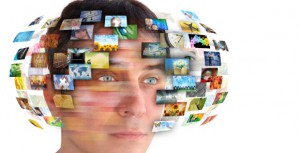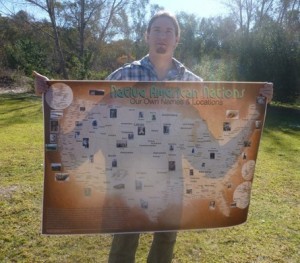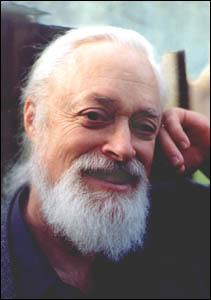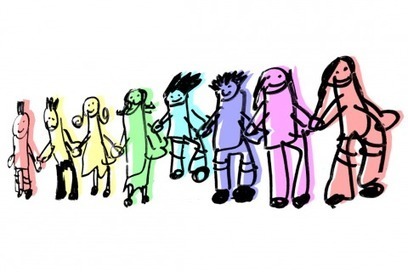The Fall GEO Theme seeks to deepen awareness and understanding of the strong connections between solidarity economic activists and members of intentional communities through the common work they are doing.
Stephen E. Arnold: Replicant Hopes to Free Mobile from the Tyranny of Proprietary Software
BTS (Base Transciever Station), Design, Innovation, Mobile, Software, Spectrum
Replicant Hopes to Free Mobile from the Tyranny of Proprietary Software
August 27, 2013
Citing freedom and security concerns, the makers of Replicant are calling for donations, we learn from “Fundraising a Fully Free Fork of Android” at Boing Boing. The project hopes to give us all the choice to run our Android-based mobile devices entirely upon free software.
But wait, you ask, isn’t Android is already open source? Well, most of it, but a few “key non-free parts” keep our Android devices tethered to proprietary programs. Such parts, they say, include the layer that communicates with hardware; yes, that would be pretty important.
Also of concern to Replicant developers are the pre-loaded applications that some of us call “bloatware,” but upon which many users have come to rely. The team plans to develop free software that provides the same functionality. (I hope they also include the option to delete applications without them returning uninvited. That would be a nice change.) Furthermore, they have set up rival to the Google Play store, their app repository called F-Droid. That repository, the article notes, works with all Android-based systems.
The write-up summarizes:
“Mobile operating systems distributed by Apple, Microsoft, and Google all require you to use proprietary software. Even one such program in a phone’s application space is enough to threaten our freedom and security — it only takes one open backdoor to gain access. We are proud to support the Replicant project to help users escape the proprietary restrictions imposed by the current major smartphone vendors. There will still be problems remaining to solve, like the proprietary radio firmware and the common practice of locking down phones, but Replicant is a major part of the solution.”
Replicant is underpinned by copyrighted software that has been released under an assortment of free licenses, which their site links to here. This is an interesting initiative, and we have a couple of questions should it be successful: Will Google’s mobile search revenues come under increased pressure? What happens if Samsung or the Chinese mobile manufacturers jump on this variant of Android? We shall see.
Cynthia Murrell, August 27, 2013
Sponsored by ArnoldIT.com, developer of Augmentext
Mindjet: 10 Reasons Visualization Rocks
Data, Design
10 Reasons Visualization Rocks
Here at Mindjet, we think visualising information rocks — but more importantly, there’s a whole load of scientific proof as to why people find it so much easier to digest and work with information that’s displayed visually, rather than in traditional formats such as documents and spreadsheets. I’ve scoured the Web to find you these 10 great reasons to hop on the information visualisation train.
1. 93% of communication is non-verbal.
Or at least that’s what top psychologist Albert Mehrabian says, who argues in his Silent Messages research that the non-verbal elements of communication are particularly important for expressing feelings and attitude. It seems people tend to pay more attention to and trust the tone of a voice and visual cues, rather than the actual words being spoken.

2. Almost 50% of your brain is focused on visual processing.
And that’s according to research by David Van Essen. That’s a large part of your brain power going towards extracting information about the world with your eyes.
3. 70% of all your sensory receptors are in your eyes.
Sensory receptors are the nerves which respond to a stimulus in your internal or external environment. The fact that so many of these receptors are in our eyes makes it clear why we find it so much easier to absorb information visually.
First indigenous map of its kind; U.S. map displays “Our own names and locations”
Culture, Data, Design
First indigenous map of its kind; U.S. map displays “Our own names and locations”
Aaron Carapella, a Cherokee Indian, has taken it upon himself to create a map that shows the Tribal nations of the U.S. prior to European contact. The map is of the contiguous United States and displays the original native tribal names of roughly 595 tribes, and of that, 150 tribes are without descendants. Without descendants means that there is no one known to be alive from that tribe and are believed to be extinct.
Aaron’s journey to making the Native American Nations map began 14 years ago. At the age of 19, Aaron had already gained a great deal of knowledge from listening to stories from his family, elders from his tribe, and reading books on Native American history. To explain where his knowledge came from Aaron said, “My Grandparents would tell me, you’re part Native American and that’s part of your history. They would give me books to read about different tribes’ histories, so, I grew up with a curiosity of always wanting to learn more about Native American history.”
After reading the many books on Native tribes and not finding any authentic type maps which failed to accurately represent the hundreds of modern day and historical tribes, Aaron decided to start creating a map for himself that would be authentic and cultural. “The maps in the books were kind of cheesy, they only had maybe 50 to 100 tribes on them,” said Aaron.
The inspiration for the map to depict original tribal names came from a book that he was reading which explained the real names of tribes and reason they were given the names they have today.
“I didn’t want to make a map with just tribe’s given names on it. I wanted it to be accurate and from a Native perspective,” said Aaron.
Tip of the Hat to Duane Hanstein at Scoop.it.
Tom Atlee: Surveillance and parasitism harm society’s collective intelligence
Crowd-Sourcing, Design, Economics/True Cost, Education, Governance, Innovation, Knowledge, P2P / Panarchy, Politics, Resilience, Security, Sources (Info/Intel), Transparency
Surveillance and parasitism harm society’s collective intelligence
What this post is about: Society’s collective intelligence needs to be able to see clearly what’s going on and take action about it. Both NSA surveillance and corporate suppression of activism interfere with that vital dynamic. This post clarifies what’s going on in these dynamics and suggests strategies to counter them and increase society’s collective intelligence.
Any healthy living system will try to weed out challenges that threaten its functioning. That’s what immune systems do: they preserve business-as-usual in a body.
But this natural maintenance activity of a system can be counterproductive:
(a) when changing circumstances demand adaptive responses, when the system NEEDS to change its business-as-usual – and
(b) when the system has been parasitized by something that is using it for the parasite’s own purposes at the larger system’s expense.
Entire post below the line, with links.
Continue reading “Tom Atlee: Surveillance and parasitism harm society’s collective intelligence”
John Lievens: What’s Next for the Sharing Movement?
Culture, Design, P2P / Panarchy, Resilience
Peers will build on key aspects of the movement that Shareable, as a pioneering sharing movement organization, helped shape. Peers’ mission is to make sharing the defining economic activity of our time. They will do this through grassroots campaigns to make sharing more visible, grow the number of sharers, and legalize sharing.
What's Next for the Sharing Movement?
Neal Gorentio
Shareable.net, 31 July 2013
With the launch a promising new sharing movement organization called Peers today, it’s a good time to reflect on the character of the sharing movement.
Peers will build on key aspects of the movement that Shareable, as a pioneering sharing movement organization, helped shape. Peers’ mission is to make sharing the defining economic activity of our time. They will do this through grassroots campaigns to make sharing more visible, grow the number of sharers, and legalize sharing.
Let’s take stock of the movement. We have something special here. Sharing is deeply empowering. It’s fun and fulfilling to connect with others in such a mutually beneficial way, and sharing also helps us meet our needs. It’s rare that a movement has such powerful psychological and economic personal drivers. On top of this is the fact that we urgently need to share. Poverty and resource depletion are today's defining challenges. Sharing is a systemic fix that can address these challenges simultaneously.
With mainstream media coverage of the sharing trend, millions of people are waking up to the potential of sharing. Cities are waking up to it too – the mayors of 15 major cities recently signed a Shareable Cities Resolution promising to advance the sharing economy in their cities. This builds on the plans of Mayor Edwin Lee of San Francisco and Mayor Park Won-soon of Seoul who have shareable city initiatives already underway.
We should appreciate the strengths of this movement and build on them. Here’s more on what we have to build on and how we can build on it.
Peer to Peer Inside
Peers puts the soul of the sharing economy into its name. Peer to peer dynamics form the basis of a new, liberating social contract.
The old social contract bound citizens to large hierarchies like nations and multinational corporations. In this contract, citizens gained the protection of hierarchies in return for obedience, labor or taxes. Citizen’s rights were protected by intermediaries like labor unions, courts, and elected officials.
This contract favored the powerful from the start, but now they’ve completely broken it. The powerful — mainly big business in Western-style democracies — have co-opted or weakened the intermediaries designed to protect citizens. The elite are now almost completely free to consolidate wealth and power even more that they already have — all at grave expense to citizens.
I know this, you know this, and the multitudes know this. As a result, we’re seeing an unprecedented level of social unrest around the world.
As they have always done in crises, people are turning to each other to survive. What’s different today is that a new coordination mechanism — the Internet — enables individuals to create, share, and govern directly with one another using networks instead of hierarchies.
With this, a new social contract is forming based on peer to peer relations, which the P2P Foundation has been exploring for a decade. Instead competing with sharp elbows for rank in the hierarchy, individuals are empowered to face each other as equals and ask a simple but revolutionary question — “what can we create together?”
A Revolution For, Not Against
Complete text below the line.
Continue reading “John Lievens: What's Next for the Sharing Movement?”
Jean Lievens: The Sharing Economy — Whole Living
Crowd-Sourcing, Design, Governance, Innovation, Mobile, Money, P2P / Panarchy, Politics, Resilience, Spectrum, Transparency
The sharing economy: a whole new way of living
From accommodation to cars, the internet is turning us from consumers into providers and challenging established business models. We talk to Martin Varsavsky, founder of Fon – the largest Wi-Fi company in the world – and profile two more pioneers, from TaskRabbit.com and BlaBlaCar.com
In 2006, serial entrepreneur and investor Martín Varsavsky – inspired by a conviction that he could cloak the world in free Wi-Fi by encouraging people to share their home connections – founded Fon in Madrid. The company is now the largest Wi-Fi network in the world, with almost 12m hot spots in more than 100 countries.
“My general thinking at the time was that we live in a world in which benefits are only accrued through economic growth and the endless consumption of resources, and that there have to be other ways that are of more benefit to people,” he says. “Why should everyone have their own car when most of the time they are not using them? Think of a marina full of boats. How frequently do those boats go out?”
Today, it has been argued that the sharing economy – which is perhaps best defined as a way of sweating underutilised assets, by building communities around them and turning consumers into providers – has the potential to reboot businesses across most economic categories. Indeed, Forbes magazine recently estimated that total revenues for the sector could top $3.5bn this year, with growth exceeding 25%. However, when setting up Fon, Varsavsky became convinced that people needed a nudge or financial incentive before they'd happily share their assets.


